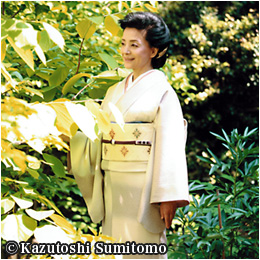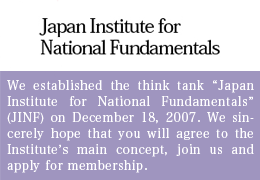CAN SOUTH KOREA IN DISTRESS STILL BE VIEWED AS A FREE NATION?
Some Americans are expressing growing concern about the continued poor state of relations between Japan and South Korea.
One such person is Kurt Campbell, a former assistant secretary of state for East Asia and Pacific affairs, who spoke at a symposium in Washington on March 13 entitled “Japan-Korea Relations at 50: the Weakest Link in Asia.” The symposium was sponsored by the American Enterprise Institute, a conservative American think tank.
During his presentation, Campbell stressed the need for closer US involvement in contributing to the betterment of the soured relations between Tokyo and Seoul—in the same way as Washington has tackled the Iranian nuclear issue and Israeli-Palestinian relations.
“You have a South Korean leader saying ‘I will meet at any time’ not with the Japanese leader but the North Korean leader, and Japanese diplomats who only say they are ‘exhausted’ by their South Korean counterparts, ” observed Campbell. Campbell warned that the strained ties between Washington’s two important Pacific allies are “hurting American national interests, hurting our role in Asia.”
In an address during an event in Seoul March 1 marking the 96th anniversary of the Korean independence movement against Japanese colonial rule, South Korean President Park Geun-hye valued the interchanges between Seoul and Tokyo over the 50 years since diplomatic relations were normalized in 1965. At the same time, however, she reiterated that “not much time is left to regain the honor of the Korean ‘comfort women,’” charging: “Continued attempts by the Japanese government to whitewash history textbooks have been hurting our bilateral relationship.”
Intent on criticizing Japan, President Park and the South Korean media fail to observe historical facts. Chang Jae-soon, Washington correspondent of Seoul’s Hapdong News Agency, had this to say about Campbell’s remarks at the symposium:
“What has impaired South Korea-Japan relations has chiefly been Tokyo’s efforts to gloss over its wartime atrocities and its colonial rule over Korea. The relationship between our two countries has further deteriorated since Mr. Shinzo Abe took office, and began pursuing nationalistic goals.”
Complacent with its untiring criticism of Japan, South Korea totally refuses to bend an ear to divergent opinions on how to view Japan’s wartime history, the “comfort women” issue among them. For instance, Comfort Women of the Empire by Professor Park Yu-ha of Sejong University was essentially banned in South Korea last February for citing historical records that prove that the so-called Korean “comfort women” had in fact not been coercively recruited by the Japanese military. The Korean authorities informed her: “Unless the parts describing the comfort women as ‘voluntary prostitutes’ are deleted, your work threatens to inflict irreparable damage on the victims, making it impossible for them to redeem their honor and their personal rights.”
“Social Designer,” Not “Revolutionary”
Her book characterizes the plight of the “comfort women” not as something related to the war but rather as “a desire—a lust on the part of the victor—to dominate the defeated, a pattern of behavior not seen under ordinary circumstances.” Relating this desire to the Japanese empire, she has entitled her book The Comfort Women of the Empire. I will refrain from challenging any of the contentions Ms. Park makes in her book, but I do wish to emphatically raise the broader issue of freedom of speech. The decision by the Seoul Eastern District Court last February to prohibit the book’s publication clearly reflects the control of speech that unfortunately has long permeated Korean society, under which every Korean “comfort woman” must be described as a victim of coerced sexual servitude by the Japanese military.
With South Korea persistently refusing to face up to historical facts about the Korean “comfort women,” it is no wonder that the relationship between Tokyo and Seoul has soured. What then should the two nations do to mend their ties? On March 1 I had a revealing conversation concerning this matter on my weekly Internet TV show with Hong Hyun, a former minister at the South Korean embassy in Tokyo who now serves as chief editorial writer for the One Korea Daily News headquartered in Tokyo.
Hong maintains that in order to understand South Korea it is first necessary for one to come to grips with the true meaning of the division of the Korean Peninsula into North and South which has now lasted nearly twice as long as Japan’s 35-year rule over Korea. Why does South Korea turn to constant Japan bashing as its president harps on the same “comfort women” issue so unrelentingly? Hong explained that the real reason does not lie in anti-Japanese sentiments in South Korea. Rather, it is a hatred of South Korea itself that has been nurtured in the minds of South Koreans over the course of some 70 years of conflict between the South and the North.
Let’s take the case of Kim Ki-jong (55), for instance, who recently attacked US Ambassador to Seoul Mark Lippert with a knife. Born in 1959, Kim studied at the private Sungkyunkwan University, known as a bastion of South Korea’s leftist ideology. The Kwangju incident (May 18-27, 1980) occurred while Kim was at Sungkyungkwan.
The incident has since been recognized as a student uprising instigated by North Korean special forces. At the time, however, it was generally viewed as an overreaction by President Chun Doo-Hwan in using the military to suppress anti-government demonstrations. As a result, a very strong leftist anti-government movement sprung up across South Korea. Explains Hong:
“Kim Ki-Jong, who was a student in the 1980s, was so inspired by the Kwangju incident that he became a dedicated anti-US sympathizer of North Korea. He has never taken to a decent occupation, becoming a professional revolutionary instead. Then in 1985, he began to develop personal ties with President Roh Moo-hyun.”
Pledging his loyalty to North Korean dictator Kim Jong-il, Roh was a bona-fide traitor to his country in the same way as Kim Dae-jung. While these two presidents held office, South Korean left-wingers were favored in all respects. Kim Ki-jong for one was named a member of the National Unification Advisory Council.
Hong observed that Presidents Roh and Kim have left legacies very detrimental to a democratic South Korea—a huge number of left wing NGOs (non-government organizations) as forces driving the nation, and left wing intellectuals influencing the policies of the South Korean government from within.
“Of the tens of thousands of NGOs that exist in South Korea today, left wing groups are especially active,” continued Hong. “The reality in the South is that participating in citizens’ campaign groups has proven beneficial to those desiring to seek a political career. Take Seoul Mayor Park Won-soon for instance, a former lawyer who initially became a civic activist, calling himself a ‘social designer’ while campaigning for the mayoral election. People would have been taken aback if Park had identified himself as a ‘revolutionary.’ But Seoul voters harbored little reservation about his description of himself as a ‘social designer,’ as that expression presented a mild image.”
Japan Must Also Be Held Accountable
In October 1986, East German leader Eric Honecker visited Pyongyang to confer with his North Korean counterpart, President Kim Il-sung. Hong explained what was discussed between the two men, based on information revealed following the fall of the Berlin Wall:
“What Kim told Honecker, in sum, was this: ‘If the South was to be democratized, revolutionary forces would be able to operate freely there. Therefore, the North would support the democratization movement in the South.’ A free nation guarantees freedom of thought and beliefs. Kim said the North would take advantage of the situation in the South to enlarge the scope of influence of the forces sympathetic to Pyongyang. Then in the 1990s, the South Korean authorities began actively analyzing information to determine which South Korean students had received scholarships from Kim Il-sung.”
Hong stressed it has become an established fact that Chairman Kim had offered a number of promising South Korean students financial assistance to go to college and, after graduation, sent them to the government to become bureaucrats or to the mass media to become reporters. “I understand that for the media alone the number of such students is no less than 100.”
Hong holds Japan at least partly responsible for such a vast infiltration of pro-Pyongyang elements in South Korea, explaining:
“Under Korean law, there are three organizations that are designated as subversive groups—the North Korean Workers’ Party, the General Association of (North) Korean Residents in Japan (commonly known as Chosen Soren), and the Korea Unification Alliance in Japan (Kantoren). As is generally known, the latter two entities are headquartered in Japan.”
Chosen Soren is North Korea’s virtual embassy in Japan. Together with Kantoren, Chosen Soren has consistently supported North Korea. Hong points out that both the Japanese government and its people fail to understand that Japan has for long constituted a battleground for pro-South and pro-North forces.
If that is the case, why doesn’t President Park Guen-hye make up her mind to work closely with Prime Minister Shinzo Abe, urging the Japanese government to implement strict legal measures to keep a watchful eye on these and other pro-Pyongyang bodies in Japan? Why should President Park so tenaciously repeat her absurd criticism of the Japanese view of history? No wonder Japan is tired of South Korea’s perpetual Japan bashing, as Campbell has pointed out.
What South Korea is faced with today, warned Hong, is an internal war on the Korean Peninsula far more serious than one can imagine—a national crisis for South Korea on a far grander scale than meets the eye. That, I believe, is the case. There is no mistaking the urgent need for joint efforts between our two countries to put aside emotionalism and mend our bilateral relations, given the situation in North Korea and the seriousness of the threat of China standing close behind.
(End)
(Translated from “Renaissance Japan” column no. 648 in the March 26, 2015 issue of The Weekly Shincho)








